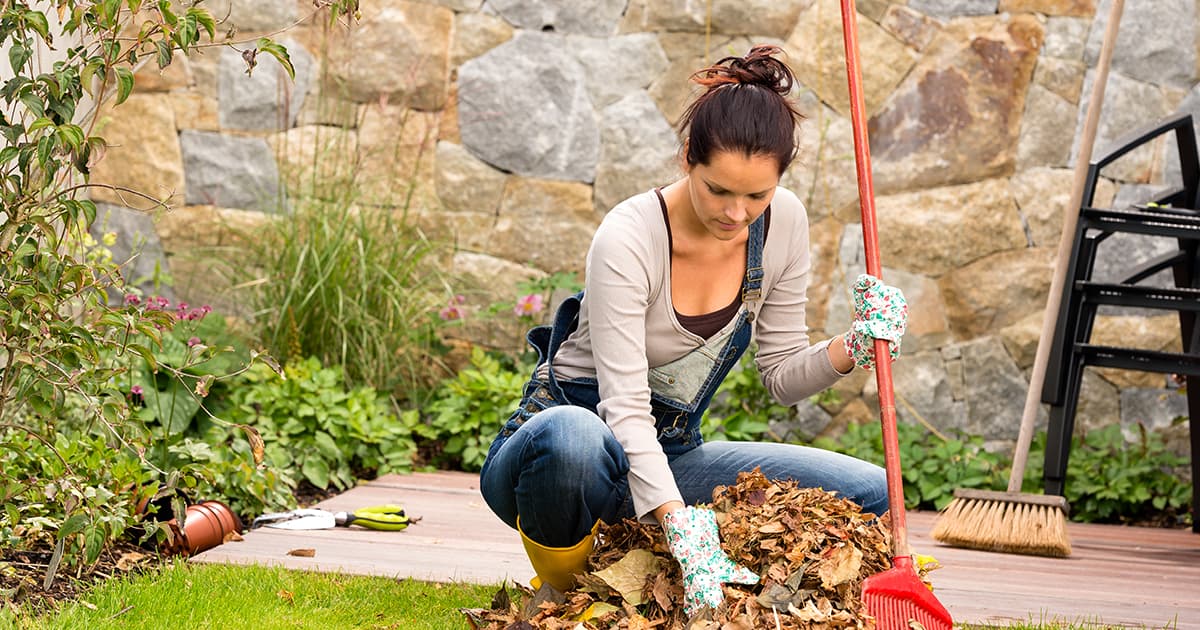Top Tips for A Spring Yard Cleanup

Spring cleaning includes your yard and it’s the perfect time to freshen it up after the long winter months. A little extra work now will pay off later with a healthy and beautiful yard all summer long. Here are some top tips for a spring yard cleanup.
1. Clean up debris
The first step of a spring yard cleanup is to pick up any garbage, pinecones, branches, dog or cat poop, or other debris from your yard. Rake up dead leaves and grass. Make sure not to compost animal waste as it contains pathogens.
2. Clean up borders and beds
Rake up leaves and debris and remove annuals and weeds. Once there is no threat of frost, remove the mulch. Spread fertilizer around your plants so spring rain can get it to the roots. As soon as bulbs flower, use a 5-10-10 fertilizer or compost to extend their bloom time and encourage next season’s growth. Give beds and borders a clean edge and keep lawn grass out with a square-head shovel. Landscape fabric and mulch will help prevent weeds from growing in your flower beds.
3. Prune shrubs and trees
Prune branches that have been damaged over winter back to live stems. Use a handsaw for branches with a diameter larger than half an inch. To prevent an outer layer of growth that stops air and sunlight from reaching the center of the shrub, use hand pruners instead of electric shears to shape hedges.
Prune spring bloomers, such as forsythia and lilacs, after they flower because buds appear on last year’s growth. Summer flowering shrubs should be pruned before buds appear because buds grow on this year’s growth, for example, Butterfly bush, Rose of Sharon, and lavender. Trim evergreens to encourage branches you want to grow.
4. Prune perennials and grasses
Prune ornamental grasses to 2-3 inches (about 5 centimetres) and flowering perennials to 4-5 inches (about 10 centimetres). After the ground has thawed, thin crowded flower beds by digging up perennials and dividing them to leave three stems or more per clump. Plant them in sparse areas. Prune damaged rose canes to an inch below the damaged area. When cutting back climbers, remove old woody ones while keeping younger green ones and fasten canes in place with Velcro or jute twine. Bend the canes horizontally and tip the buds downward.
5. Compost yard waste
Add yard waste to your compost pile or make a 3 by 3 by 3-foot cube out of wire fencing. Chip pieces larger than a half inch(just over one centimetre) in diameter and shred leaves or add compost starter. Do not add weeds that have gone to seed. Keep the compost moist and aerate it every two weeks.
6. Replenish your lawn
Remove areas of damaged lawn with a square metal rake. Add a ½-inch (just over one centimetre) layer of compost and plant grass seeds in April or May, whenever forsythia starts blooming in your area.
7. Repaint trellises and fences
Remove damaged fence boards and lattice. Scrub wood clean, patch with epoxy, and replace damaged sections. Scrape off old paint and sand wood with 60-grit sandpaper. Stain or paint after temperatures are above 10 degrees Celsius.
8. Fix patios and paths
Clean walkways and patios with a pressure washer to remove stains or algae spots. Rake gravel back into walkways and refill joints between flagstones with sand or stone dust, setting it with water. If pavers have shifted over winter, top up the base materials and put them back in their places.


.jpg?300x300)
